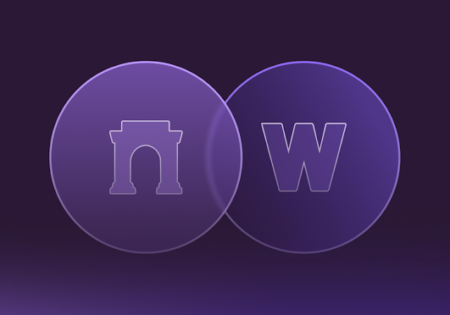We often ignore the importance of security and privacy while browsing the
internet. The internet is a dangerous and untrustworthy place with tons
of potential risks and threats. Brave is a web3 browser that promises to
provide a safe, fast and private internet experience.
Brave has over 57 million monthly active users worldwide, and can even surpass 22 million per day. Let’s take a closer look at what Brave is, what features Brave provides, and how Brave is different from other browsers.
What is Brave Browser?
Brave was first developed in 2015 by the creator of JavaScript and co-founder of Mozilla, Brendan Eich,
and Brian Bondy. With the aim to provide users with a private, secure
and faster web browsing experience, Brave was launched in 2016. The
browser would block ads and trackers by default, and give users more
control over their data, as they believed traditional browsers weren’t
doing enough.
Companies like Facebook and Google take advantage of user data
and show them targeted ads tailored to their interests, behaviour and
demographics. Amazon uses browsing and purchase history to recommend
products. Some companies even sell user data to third-party advertisers
or other companies, using trackers to monitor user activity, mainly for
targeted ads. While too many ads on a single web page can mean long load
times, some malicious ads can even install malware on your device. All
in all, it leads to a less efficient and risky browsing experience.
Brave is specifically designed to overcome all the shortcomings of
web2 or traditional browsers. Brave blocks ads and trackers by default,
preventing third-party entities from collecting user data, providing a
cleaner browsing experience and significantly reducing the risk of cyberattacks.
Brave emphasises transparency and user control, ensuring that users are
aware of any data collection and have the tools to manage it.
Exploring Features of Brave
Brave offers all the features that other browsers do, but often with a
web3 twist. Let’s take a look at the prominent features Brave has to
offer.
Compatibility
Firstly, Brave is a Chromium-based project, meaning that it has many
of the same features as Google Chrome, including the user interface.
Brave has an import tool that can transfer your browsing history,
bookmarks, and other settings from Chrome. Brave is also compatible with
most Chrome extensions. This makes it easy for users to switch from
Chrome to Brave.
To import your data, after downloading Brave, go to the menu button
(three lines in the top right corner), go to settings and click on
“Import bookmarks and settings”, then select the browser you want to
import from. Click on “Import”, and it’s done. Pretty simple.

Brave also provides a variety of search engines. Users can choose
from Brave, Google, DuckDuckGo, Qwant, Bing and Startpage to set as
their default search engine.
Go to Menu, click on Settings and go to Search engine. Select the one you want to use for both private and normal windows.

Privacy and security
Privacy and security are fundamental parts of Brave. By default, it
blocks trackers, advertisements, and third-party cookies, while offering
automatic upgrades of HTTP connections to HTTPS for improved security.
Blocking ads and trackers helps websites load faster, consumes less
internet data, and most importantly, protects users’ privacy.
Speaking of privacy, Brave has a private mode where your browsing
history, cookies set by third-party websites and other data will not be
stored. You can see the number of ads and trackers blocked along with
the bandwidth saved on your Brave dashboard.

Brave’s private tabs can be used with the Tor network for enhanced privacy.
Tor is an open-source software built for anonymous communication. Tor’s
layered encryption structure makes your browsing activity more
difficult to track and hides your IP address from websites. But keep in
mind using Tor can be slower than other browsers.

Brave also provides a built-in VPN feature called Brave Firewall + VPN.
Brave Rewards and Basic Attention Token
BAT stands for Basic Attention Token. It is a cryptocurrency built by Brave to incentivise user engagement with ads. By viewing ads, users can receive a 70% share of the ad revenue in the form of BAT tokens, which they can then sell on exchanges. A win-win for all parties.
One often overlooked aspect of web2 is that creators get paid very
little for the content they create, and big firms earn a lot from ads
displayed using creators’ content. On Brave, users can optionally
contribute some of their BAT tokens directly to creators automatically,
without interrupting their browsing experience.
Built-in Crypto Wallet
Installing third-party extensions to transact cryptocurrencies can be
risky. Brave’s built-in cryptocurrency wallet lets you buy, send and
swap crypto assets and NFTs. You can import an existing wallet, create a
new wallet or connect your hardware wallet. Users can manage their
portfolios, interact with dApps and see live market graphs through Brave
Wallet.
Brave vs. Other Browsers
Now let’s compare Brave with other popular browsers.
Brave vs. Chrome

In terms of security and privacy, Brave is far ahead of Chrome.
Chrome’s developer Google is an advertising company which raises many
concerns regarding user privacy. Also, Chrome doesn’t block trackers and
cookies by default.
Even though blocking ads and trackers speed up loading on Brave, the
speed is similar in both browsers. Since both browsers are
Chromium-based, they support most extensions available in the Chrome Web
Store.
Brave vs. Firefox

Just like Brave, Firefox is also open source. The developer of
Firefox, Mozilla, is a non-profit organisation, so there aren’t any
obvious incentives to track user data. Over the years, Firefox has
increased its privacy significantly.
However, Brave still offers more privacy tools and rewards users for
watching ads. Firefox offers better customisation than Brave and a wide
range of extensions.
Brave vs. Safari, Edge, and Others
Safari and Edge are both private and secure browsers. They have
built-in features such as Tracking Prevention, Private Browsing and
Content Blockers. Safari is available only on Apple devices, so
extensions are limited. Edge is Chromium based, so it supports a range
of extensions.
Brave outperforms both of them in ad blocking, speed and
customisation. Safari and Edge do not provide a built-in wallet or
monetary incentives as Brave does with BAT.
There are other less popular browsers like Opera and Vivaldi. Opera
has a built-in VPN feature, and Vivaldi is highly customisable, but
security is not as good as on other browsers.
Here is the comparison of all the major browsers:

The Future of Brave: Challenges & Opportunities
The Brave team constantly works on new features and innovations to
improve privacy on the browser. Brave is also working on expanding its
reach to more users worldwide.
But the path is not linear. Brave faces several potential hurdles in
its journey to become the leading privacy-focused browser. Other
privacy-focused browsers like DuckDuckGo and Firefox mean that
competition is high. Given that BAT is a cryptocurrency, its volatility
can make it difficult for Brave to attract advertisers and users.
But opportunities still remain wealthy. The general public is becoming increasingly aware
of their needs for privacy online. This will in turn drive demand for
privacy-focused browsers like Brave. The increasing adoption of web3
generally will also work in Brave’s favour.
As Brave is a relatively new browser, the Brave community is likely
to grow over time as more and more people discover the browser’s
benefits.
In Summary
In today’s digital world, we all want to feel safe and in control
when we go online. Privacy and security are gradually becoming the
benchmark for online experiences. Brave is revolutionising the way we
surf the web by putting privacy first, saving time and paying you to
watch ads.
This might be the start of the new internet, or it could just be
another browser. What are your thoughts on Brave browser? Let us know.


